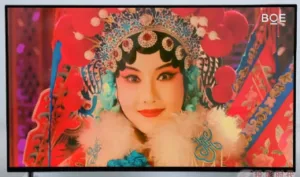It wasn’t so long ago that I would get several proposals a year from start-ups touting their new display technologies, all of which would be ready for market in 18 months. It was easy to toss these proposals in the digital trash bin because, as is well known in our industry, it typically takes 20 years for a display technology to get from lab to volume manufacturing — if it gets there at all.

Promising technologies go through many stages, and our news stories often report on a technology reaching one of its targeted milestones — or missing it. But we generally know weeks or months or years in advance that these milestones are coming and we watch for them. We are not saying “Here’s this exciting new technology we’ve never heard of before.” We are saying, “This technology we’ve been following has reached a milestone, and it’s as good/better/not as good as we anticipated and here’s why.” At the moment at least three major announcements/milestones are percolating, and that’s a lot.
Milestone 1
At CES, Samsung Display introduced its QD-OLED display panels, offered side-by-side comparisons with conventional OLED panels to analysts and media, and announced that Sony and Dell would be selling products based on the panels soon, which Sony and Dell confirmed. I’d argue that’s three milestones all at once, and the surprise here was how remarkably good the QD-OLED technology is. It immediately became the new premium display technology that displaces the previous king of the hill. That doesn’t happen often.
Milestone 2
For many years the holy grail of OLED materials has been a deep blue phosphorescent emitter (or an equivalent such as a hyperfluorescent material) that that has long life and high efficiency. For at least ten years I’ve been asking executives and Universal Display Corp. how their work on blue phosphorescence was coming, and the answer has always been something like “We’re working on it.”
Now, UDC has said they have found that holy grail, that it meets industry requirements, and should be commercially available by the end of this year. (UDC Breaks Cover on new OLED Blue). I am usually skeptical of this sort of unsubstantiated press release, but UDC has been so circumspect over the years and has always been so careful in its public announcements, that I’m inclined to take it seriously. A deep blue phosphorescent emitter would increase the efficiency of RGB OLED, QD-OLED, and WOLED displays, and would relieve RGB OLED and WOLED displays of problems with differential aging and simplify pixel design. Should this new material find its way into displays in the next year or two, it would be a major achievement.
Milestone 3
Finally, Nanosys has developed a printed electroluminescent quantum-dot device. (Think of an OLED structure with quantum-dot emitters replacing the organic LED emitters.) This kind of device used to be called “QLED,” in a neat contrast with “OLED,” but Samsung co-opted that term for its quantum-dot-enhanced LCD panels. The search by several companies for a new name has wound up producing several. BOE uses AMQLED. But there’s much more to this than approximating OLED fabrication procedures to make an AMQLED.
 BOE announced the development of this 55-inch, 4K “AMQLED” display in late 2020, claiming a color gamut of 119% NTSC and a contrast ratio of 1,000,000:1. (Photo: BOE)
BOE announced the development of this 55-inch, 4K “AMQLED” display in late 2020, claiming a color gamut of 119% NTSC and a contrast ratio of 1,000,000:1. (Photo: BOE)
I can’t do much better than to extract a few paragraphs from a recent email sent me by Jeff Yurek, Nanosys Director of Marketing. The text has been edited for length and style, and to preserve Jeff’s reputation.
“We’re excited about the SmartKem news, too! [See Smartkem & Nanosys Expand on Joint Development] Bringing together solution-printed transistors with solution-printed emitters is a big deal, we think. You asked how we print the LEDs. These are not conventional LEDs; they are “NanoLEDs,” which is Nanosys’ tradename for electroluminescent QDs manufactured using solution processing. These solution-processed QDs can be easily made compatible with inks for printing. The QD-OLED displays shown at CES are a great example of the first inkjet-printed QDs in a commercial display application.
“Printing the QDs is one thing, but what about the whole device? NanoLED devices are quite similar to OLEDs and we get to leverage a lot of the work that has already been done on solution-processed OLEDs. In fact, the first fully solution-printed 55-inch NanoLED TV has already been demonstrated by our friends at BOE.
“So we can make a printed EL device including the emitter and all other required layers, but one of the trickiest remaining challenges is the backplane. How do we drive this printed flexible display? This is where SmartKem comes in with a unique flexible, printed backplane that has the high mobility needed to drive an EL display like a NanoLED. We’re really excited about the progress we’ve already made in bringing these two technologies together.”
Did you get that? Nanosys is developing a fully printed, flexible ELQD display. I know: There’s many a slip twixt the lab and the production line. But we’ve speculated for years that ELQD could be the ultimate display, and if it’s solution-processed it could actually be affordable!
The three technologies I’ve just discussed have each been on the radar screen for many years, and in that sense they are not new. But these latest developments are. We live in interesting times. (KW)
Ken Werner is Philosopher Emeritus at Nutmeg Consultants and the 2017 recipient of the Society for Information Display’s Lewis and Beatrice Winner Award. You can reach him at [email protected].

